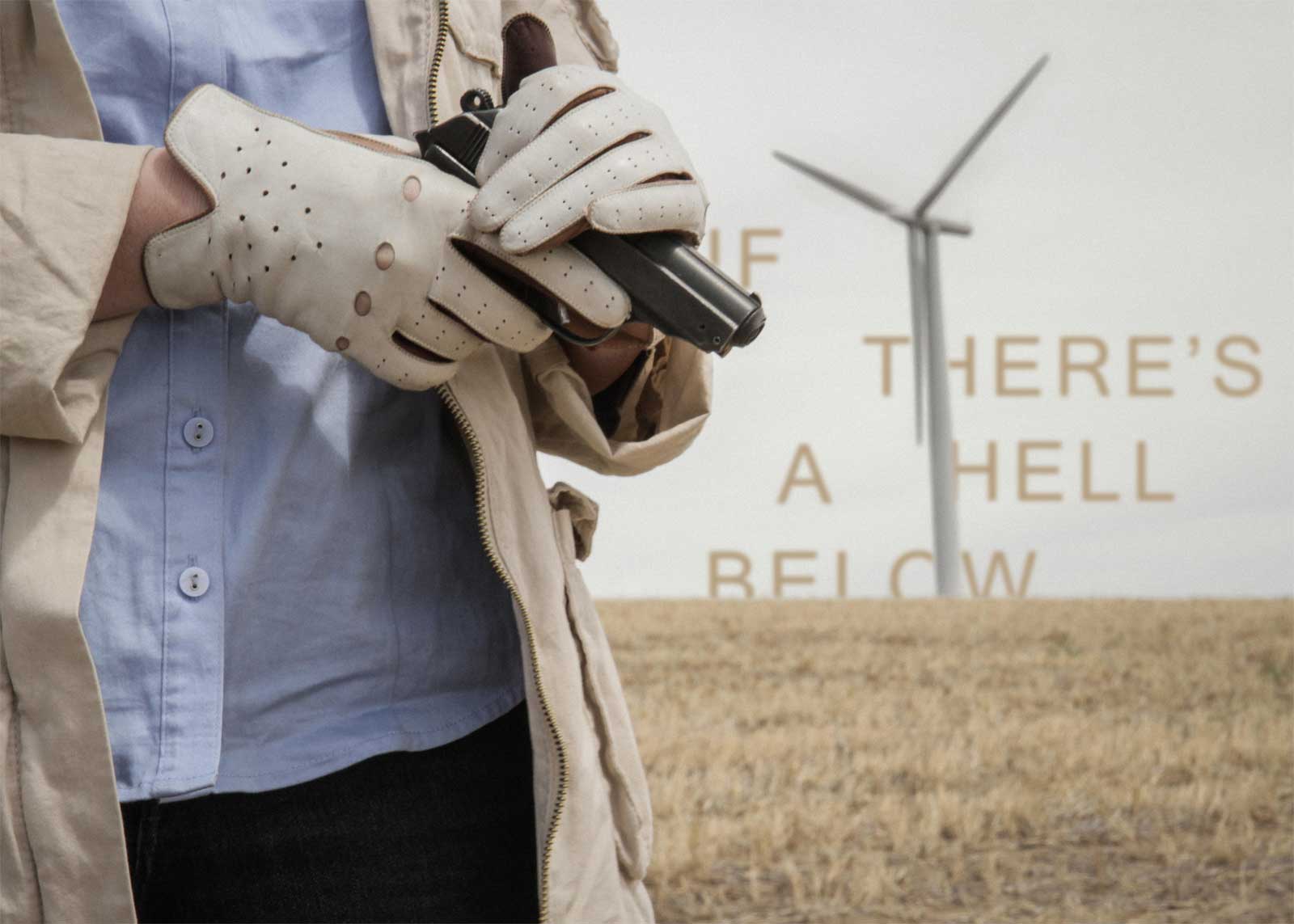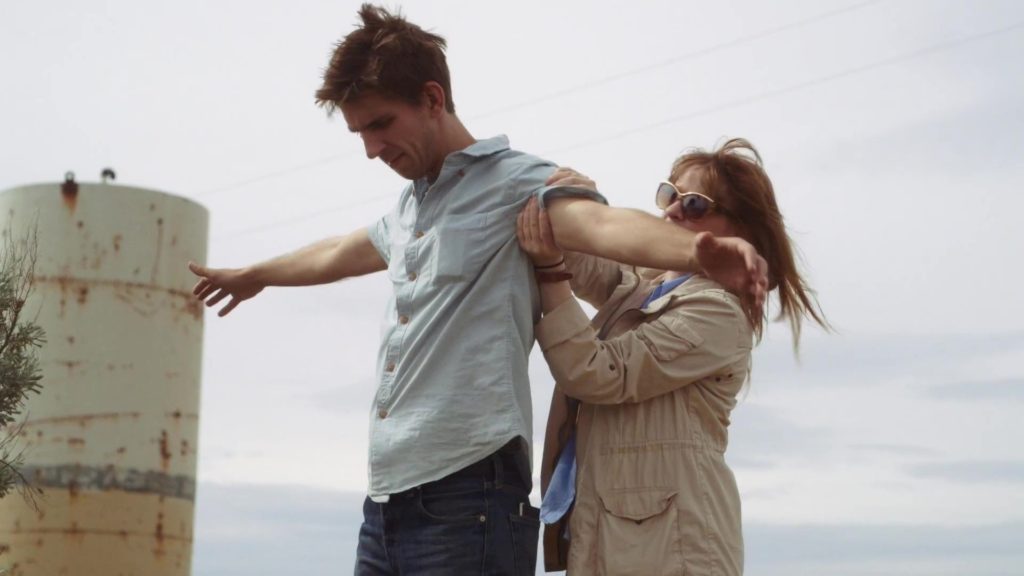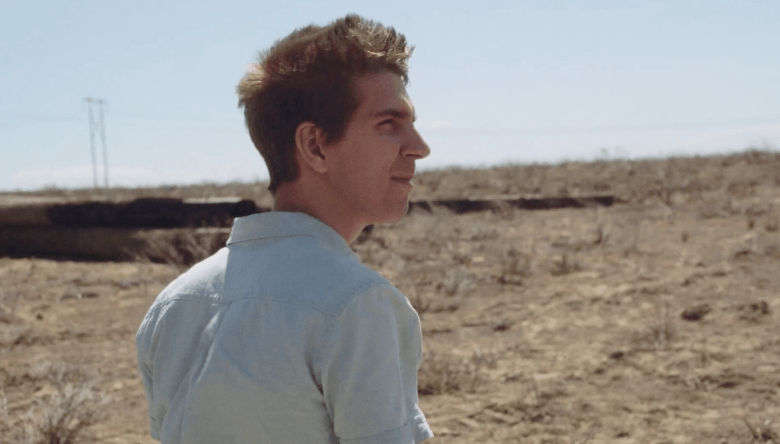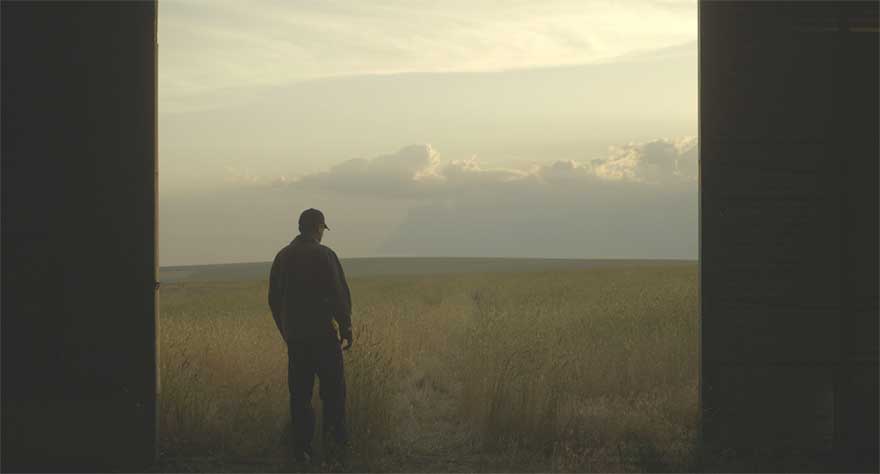If There’s A Hell Below Explained and Interview With Nathan Williams
WOOT woot! Happy 900th post everyone! What a great film to be number 900.
I have got to stop searching for surprising movies in all the normal, standard ways. I read Variety, Entertainment Weekly, trade journals, Twitter, about a billion different blogs and all that work fails me. I know, because last night I just stumbled across a movie that just came out a couple days ago completely by accident. If I had a clue I’d stop looking entirely, and just listen to you guys, wait for listings at my local theater, Amazon, and Netflix. And I’m thinking that it would just be simpler over all. But the kind of movies that will make you do a double take are really hard to find and few and far between. So I really just have to get used to finding
But today… do I have an amazingly different, and eye opening film from Nathan Williams for you to try out… “If There’s A Hell Below”
For those of you that haven’t seen the film yet, let me set this fantastic little film up for you. Debra is an extraordinarily paranoid Government security expert for an unnamed three letter acronym. And she is desperate to share information of some clandestine nature with a reporter of a small paper. And so we find ourselves … out… in… the… middle… of… nowhere for a meet between these two fascinating characters. And immediately you realize that there is going to be zero in the way of trust as this movie unfolds. Paranoia is the name of the game here. Paranoia, layered on top of paranoia, on top of more paranoia. And yet, it would seem, that Debra’s paranoia is completely justified. And it’s inside this fascinating setup that our movie devolves. Here, check this trailer out, and decide for yourself if this movie is for you.
‘If There’s A Hell Below’ won’t be for everyone. But I’m guessing it’ll be for 90% of you that read my stuff here. Here… here is a great litmus test to tell you whether or not you’ll dig this film – if you are into really any of the films below, I’m guessing you ought to definitely give this movie a chance:
Are you sensing a theme there. Quiet, dialogue driven, and intense films all. Basically if you dig anything by Terrence Mallick (To the Wonder, Tree of Life, etc) you are in. Or, maybe better yet, if you like Shane Carruth’s work, most specifically Upstream Color, you be at home here. Heck, you are here aren’t you?? And you generally just take my word for it with regard to other films, don’t you?!? Hahahah. Just try this one out. You definitely won’t see anything like it again, and I’d even go so far as to say you will find the journey fairly amazing. Promise.
Detailed If There’s A Hell Below Explanation Walkthrough
From here on out I plan to dive really really deeply into this film and converse with those of you who have already seen this great film. So, for those of you that doesn’t cover, please give it a watch and come back to discuss the film below.
As I have said above, the film is all about Abe and Deborah. (Oh and Schafer and Mooney, but we’ll get to them in due time.) Deborah wants to offload a thumb drive of names and information of some sort or other. This film was made in a post Snowden world after all. Right? And from what I know about the initial overtures between Snowden, Glenn Greenwald, and Laura Poitras they also had a similarly hairy set of conversations about how this conversation should go. But this time we have two individuals standing in the middle of a horizon filled sky with no one else around.
But very quickly on in this conversation about trust, Abe and Deborah begin to wonder if that suburban over there,… was it there before they started talking? Seems like something that they would have noticed before. And yet, there it is. So Deborah tells Abe to go, to get in the car, and haul tail… to find somewhere else to have this conversation. But Abe? He decides to go check the big suburban out. He drives over, hops out (and Deborah is on the floor of Abe’s car hiding) and looks through all the windows and underneath the car. Nothing. There is nothing there. But because Deborah is nearly hyperventilating now he decides to leave. And in a shot that I can only classify as brilliant… as they are driving away from the suburban…
The car turns onto the road and begins to follow them.
Such a fantastic shot. Nathan? My friend? Brilliance right there buddy! And that is the level of cleverness of this film. Taking a conversation between two people, drop in two more mysterious people, add two different cars, a gorgeously remote horizon, some windmills, some fantastic writing and you have yourself a clever, genre busting film.
As the movie continues, and they are driving in the car, we get our first really important conversation between Abe and Deborah. Abe tells this story from his youth that he’s never told anyone before. About finding this set of bushes were normally bright red, but had become green and black all of a sudden. And when Abe and his friends take a closer look they realize that they are covered in caterpillars. To save the bushes, Abe, his friends and their parents begin scraping buckets and buckets of these caterpillars and dumping them in a ravine. And as they were about to kill the caterpillars in a fiery inferno, Abe dove in and tried to save as many of the caterpillars as humanly possible. He took the 50 or 60 caterpillars home and began feeding and caring for them religiously. But the caterpillars seemed to be constantly disappearing. But there was no possible way they could be escaping.
So what was happening to these caterpillars? Where were they going? And that was when Abe started realizing that the caterpillars were eating each other. And at that point they were so big that Abe was totally repulsed by these creatures he had once tried to save. Abe then told Deborah that he took the three remaining caterpillars and smashed them with a hammer. But let’s step slowly away from this story for now – I’ll cover it in more detail later.
More importantly, is that Deborah and Abe begin to realize that the suburban really is following them, and they really are coming after them specifically. As they are trying to give the suburban the slip Deborah tells Abe that there are two things putting them at risk right now. The first was the information in her head. And the second was the information on the thumb drive that she had given to Abe. So Deborah asks Abe to throw the thumb drive out of the window at their earliest opportunity. But instead of throwing out the thumb drive, he chucks his lighter instead. Which, is significant for obvious reasons.
A few minutes later, Deborah and Abe have been captured and we cut to the scene at the beginning of the movie which showed Deborah being caught and thrown into the back of a car. Soon Abe and Deborah are in a barn pleading with Schafer and Mooney. Abe gets walked out into a field by Mooney, and it’s then that Deborah realizes that Abe has probably already been killed and that her time is nearly up.
When Mooney shoves Deborah into the pit, he looks over at Schaefer and then shoots Deborah 4 or 5 times. And then the two leave together. And while they are driving, Mooney tells Schaefer to pull over and throws up. After which, Mooney proceeds to tell a story very similar in tone to Abe’s caterpillar story shared with us earlier on in the movie. I’ll get more into that story in just a second. But it was this story that actually gives Schafer pause after going separate ways from Mooney. So much so, that Schafer gives Mooney a call – and he doesn’t pick up. Which then gives Schafer the fullon heebs – and heads back out to the barn… which brings us to the ending. And I’d like to dive a little deeper into the stories of If There’s a Hell Below first.
If There’s A Hell Below and The Stories Within
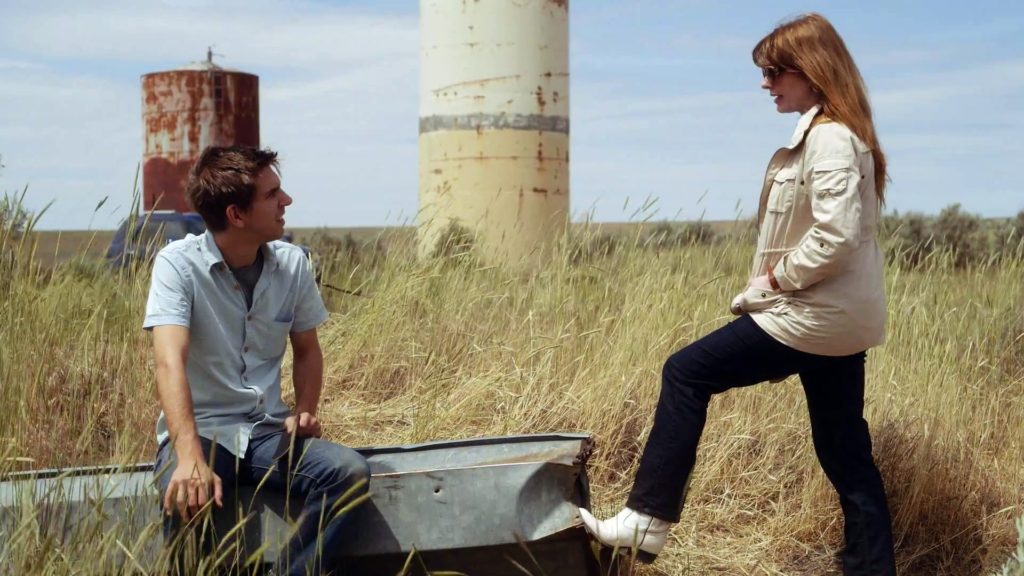
Remember that story Abe told about the caterpillars? The only problem with it was that it was riddled with lies. Small ones, sure. But lies all the same. At first it was Abe mentioning his mother and father… and Deborah corrected him by telling him that he didn’t have a father. And come to find out, he had been raised by two women. And later on, Schafer mentions to Deborah, that it was the wrong season… that caterpillars don’t come out in the summer. Which brings up the question… why did Abe choose to lie to Deborah about this story? Why did he hide the fact that he had two mothers? Or why did he change the season? Maybe they were innocuous lies, but they raise the larger question about Abe and his motivators. Why was he there with Deborah? If truth was so important to him with regard to his job, why did he actively lie to Deborah when telling this personal and insignificant story? And what was his motivation in keeping the drive as opposed to getting rid of it?
And then there is the turtle story that Mooney tells Schafer. Which is a simple enough story about how when Mooney was younger he and a friend found two turtles out in the wild that they decided they were going to keep. And to mark them as distinct and different one was marked with an X and the other a O on their shells. Eventually though they weren’t able to keep them anymore and they ended up disappearing and assumed dead. But one day Mooney goes back and finds his X turtle out at the river where he had originally found it. But this wasn’t so much a story about turtles, but rather a story about Abe and Deborah. And like Abe’s story, there are sections that are obvious lies and misdirections hidden within the story to keep Abe from the realization that he hadn’t killed Deborah, while still telling him.
The Ending details of If There’s A Hell Below
Now, I have to admit that it’s a fairly bad day for a movie fan like myself when I have to talk directly to the writer and director of a movie to realize that I missed large swaths of what happened at the end of a movie. To my defense, I will say that I STARTED the movie at 3 am. And so when this thing came in to the home stretch I wasn’t at my best… not even by a long shot. So there were a few key details at the end that I TOTALLY and completely missed. But thankfully enough Nathan Williams was kind enough to walk me through the ending in the most brilliant, and slow motion way, so that even I could fully understand what exactly happened at the end.
So now, cutting back to Schafer, who is completely on red alert – back at the barn, he sees Mooney’s (actually Deborah’s car with the new plates) car there at the barn. Schafer is wondering what the heck is going on now and he starts searching the barn and the area near by. Then he heads out to the grave where Deborah and Abe were shot only to find Deborah’s jacket without bullet holes in it. And when he looks in he sees that it’s actually Mooney that was shot and killed. And that Deborah is now missing. Ok that is what happens. The intricate details of the what. But what the!? What does it all mean? Glad you asked. First though, let’s jump to some of the highlights of the conversation I was lucky enough to have with Nathan Williams about his movie and some of the details of it’s rather ambiguous ending.
Taylor: “My readers and I love to hunt down hard to understand and enigmatic films to discuss. Too many films today pander to the viewing audience, but your film, swings to the other side of that spectrum. What drove you decision to buck this Hollywood low-IQ trend?”
Nathan: “Hi Taylor. First, thanks for watching the film and for the kind words. It’s a great question. First, I think as an independent filmmaker you have to make work you’re passionate about. The work is too hard, the length of the commitment too long, and the potential for a film disappearing into obscurity so high that, to me, it’s crazy to embark on a film unless you love it. So in large the decision to make this kind of film can just be boiled down to my personal taste.
“Second, it’s a personal long-term artistic goal to make work that trusts its audience–that dares the audience to not just be passive but actively engage with the material, to meet me partway. Now of course audiences have so many viewing (and other consuming) options, so you have to give them something. Unless your film arrives with the reputation of a famous filmmaker, you can’t simply present the audience with nothing but frustrations and intellectual demands. But to me the magic of cinema isn’t on screen–it’s in the mind of the viewer. The greatest thing cinema can do is not to give us spectacle (though spectacle can be a great tool in the toolbox) but to inspire thought, imagination, reflection, catharsis, etc. The great filmmakers knew that what is off-screen is just as important–sometimes more important–than what is on it. I think American cinema has moved away from this kind of trust in many ways, so I’d love to try to push the needle back in that direction. Or at the very least, I’ll go down swinging for that effort.
“Third, when you’re making a microbudget indie film with heretofore unknown actors, you might as well making something unlike anything else out there. If you’re simply a fourth-rate It Follows or a fifth rate Manchester By the Sea, why would anyone see your movie instead of the first-rate versions? So our ethos was, let’s take risks, let’s swing for the fences, and even if we aren’t 100% successful, we’ve made something utterly distinctive that at the very least will generate discussion.”
Taylor: “If there is a Hell Below is such an evocative title – but screams horror film… not riveting psychological thriller. Where did the title come from?”
Nathan: “Yeah, in the process of trying to sell the film I did find the horror-ish title to be a minor hurdle. Though, to their credit, nobody ever asked me to change the title.
“The short answer is that it’s a Curtis Mayfield song. “If There’s a Hell Below (We’re All Going to Go).” Mayfield’s song is less theological statement than an expression of anger and despair at the post-1968 state of race relations in the country. Now my film is decidedly not about that, but it does tap into a different sort of anger and confusion–that so much of our contemporary challenges are not clear issues of Right and Wrong but issues of Who to Trust and Why. And that that none of us are guiltless.
“Secondarily, the mention of Hell does introduce the notion of real moral stakes. This is not a film that sits in overt moral judgment on its characters (even the “bad guys” are shown, I hope, to be complex human beings) but the mention of Hell, even phrased in a conditional, might in a small way prompt the viewer to think about a movie like this as more than just a fun intellectual chess game. That it’s not just about winners and losers but about reasons for doing things.
“Lastly, I thought a conditional phrase of a title might introduce–if only on a subtle or even subconscious level–the notion that a statement offered might not be true. The two stories in the film are not outright lies, but they are not entirely true either.”
Taylor: “That makes more sense… when researching I tripped over the song and wondered if it might be related.
“So about that last statement you made there, ‘The two stories in the film are not outright lies, but they are not entirely true either.’ So are we to think then that Abe is lying to Debra? And that maybe he isn’t in fact who he says he is?”
Nathan: “I would say Debra is smart enough and has done enough research to verify that Abe is in fact who he says he is. (She does work in the intelligence field after all). But she picks apart some innacuracies when he starts telling the story (he neglects to mention his two mothers), and then one of the two “heavies” (Schafer–so named in the script but never in the film) points out factual inconsistencies in Abe’s story. Indicating that at the very least Abe’s story is embellished.
“Now Abe embellishing is not surprising. And it doesn’t force us to question everything about him. People embellish stories. And Abe, despite being a reporter, seems to have an overactive fish story gene. But it’s notable he does lie, and I hope that realization causes the audience to ask why. And then, later, to approach the second story somewhat primed to question whether it too may not be completely factual.
Taylor: I then asked a ton of questions about the ending – which I have already listed out his responses in the ending section above. And then Nathan summed up the ending in just a couple of very good high level sentences for us.
Nathan: “Yes, Mooney–for reasons known only to him–spared Debra. Then went back. Then, presumably, some encounter occurred with Mooney getting a bullet in the brain. Debra vanishes. These are the facts of the crime scene. The motivations and implications are up to the viewer.”
There was a lot more to our conversation than that – but that is the bulk of it that you would care most about. Which brings us back to…
What Does the Ending of If There’s A Hell Below Mean?
Sure. We have turtles and caterpillars. We have graves and bodies. Mooney and Abe are both dead. And Deborah is on the run. Schafer is on a plane to anywhere else but here. And I am still left with the question – what the hell just happened? Why did Mooney not kill Deborah. And more importantly, why did an assassin (supposedly) throw up after killing Abe? What was the deal with Deborah, lying there in the grave, was she wondering when the last shoe was going to drop? And why was Abe the one to catch lead? But let me throw out a couple of off the wall theories as to what we saw happen here at the ending of If There’s A Hell Below. And afterwards, I’d really like to hear your theories, because I am stretching here! hahah.
Theory #1 – Morality Tale & All Liars Will Be Punished
Who are the ones that are lying in this film? We know for a fact that two lies are being told for various and complicated reasons. The first liar we encounter is Abe. Abe doesn’t admit that he doesn’t have a father and covers up the fact that his parents are both women. And Deborah calls him out on this lie. We also know, because Schafer makes it clear – he also lied in his story about the caterpillars. We just know that it factually could not be right. Were these lies that Abe told substantial? Were they very important because he was covering something up? This theory says they weren’t. And what about the lies that Mooney told to Schafer? They were definitely much more significant. They imply that he was something he wasn’t. But ultimately, this theory doesn’t really think that matters. The only thing that matters was that he lied. And because Mooney lied, he found himself dead only minutes later.
In this theory, the script pays out justice for sin. In this theory, If There’s A Hell Below is not so much a movie as it is a morality tale. It tells about the pain of lies and then doles out judgement for said sin. This theory reminds me of The Knight of Cups and the discussion there around the prodigal son we had. The story we watched wasn’t the story that was being told. Right? Theory #1 is as simple as that. Nathan is doling out punishment for the stories being told that were not correct. Now, why would Nathan do that? Is it a social commentary on the pain of lying and the importance of moral codes? (Though I have had a marvelous conversation with Nathan over the course of the past couple days – I don’t know anything about Nathan’s spiritual background.) But hey… it could be.
Theory #2 – Abe Is Actually In On It
Theory 2 runs counter to something that Nathan told me directly in response to my wondering about Abe’s duplicitousness. I wondered aloud if Abe was actually, possibly, in on the whole thing. Or at least partially. Maybe he was a spy trying to get access to the names and the data on that thumb drive. He did after all keep the drive when told to save his neck and throw it out the window. Right? Maybe he gamed Deborah to get her to meet and to share the information. Maybe this entire story originated with Abe trolling Deborah to give up information she wasn’t specifically wanting to give out at first. I don’t know… but there are a million possibilities here.
This theory definitely assumes that Abe was a part of another three letter acronym. Maybe the KGB? Or another government agency? Could he be the only one really in the know? I’m fairly partial to this theory to be honest. It explains a lot about his downplaying of the paranoia. Come on Deb… just hand it over. Let’s get on with it. Sure, Nathan’s comment about how thorough Deborah was with her background search. But that doesn’t mean that his file wasn’t just perfectly constructed. As any operatives would have to be. She memorized what she was told to memorize about Abe. And it was Abe that thought he was going to win the day. And in this theory Mooney was also in play as well. Maybe he was from a totally different country or agency. Which would mean that we had Schafer with the CIA, (I don’t know, just go with me here) and Mooney with the Chinese, and Deborah with the NSA, and Abe with the Russians. Weirder things have happened.
Theory #3 – Chaos Theory
And my final theory I want to push forward is that it just is what it is. Abe just got stuck in the cross fire. Mooney was an assassin that just sucked at it – and made him sick to his stomach. Mooney decided he couldn’t kill Deborah and later went back to help her get away… or to kill her. Either way. Doesn’t matter. And Deborah was going to have none of it. And Schafer? He just got to watch the chaos happen.
——
So how do you think the ending happened? What am I missing here? (No, believe you me, I know that I am missing piles of things here.) Bring your theories and toss them out here for us to mull them over and I’ll even add some of them to the list. Love to hear what you have to say. Hopefully you enjoyed the ambiguity of the movie. I know that I did anyway.

